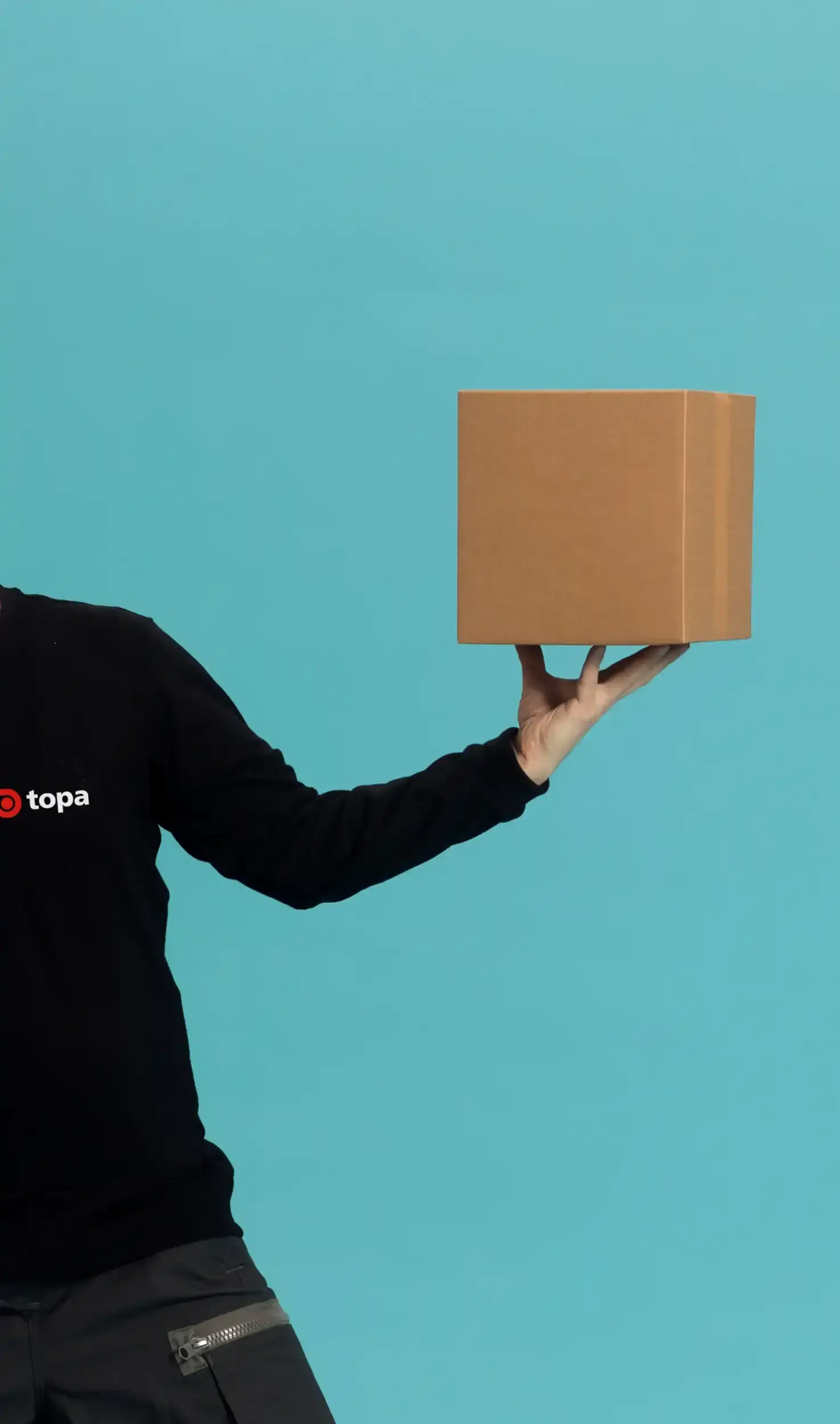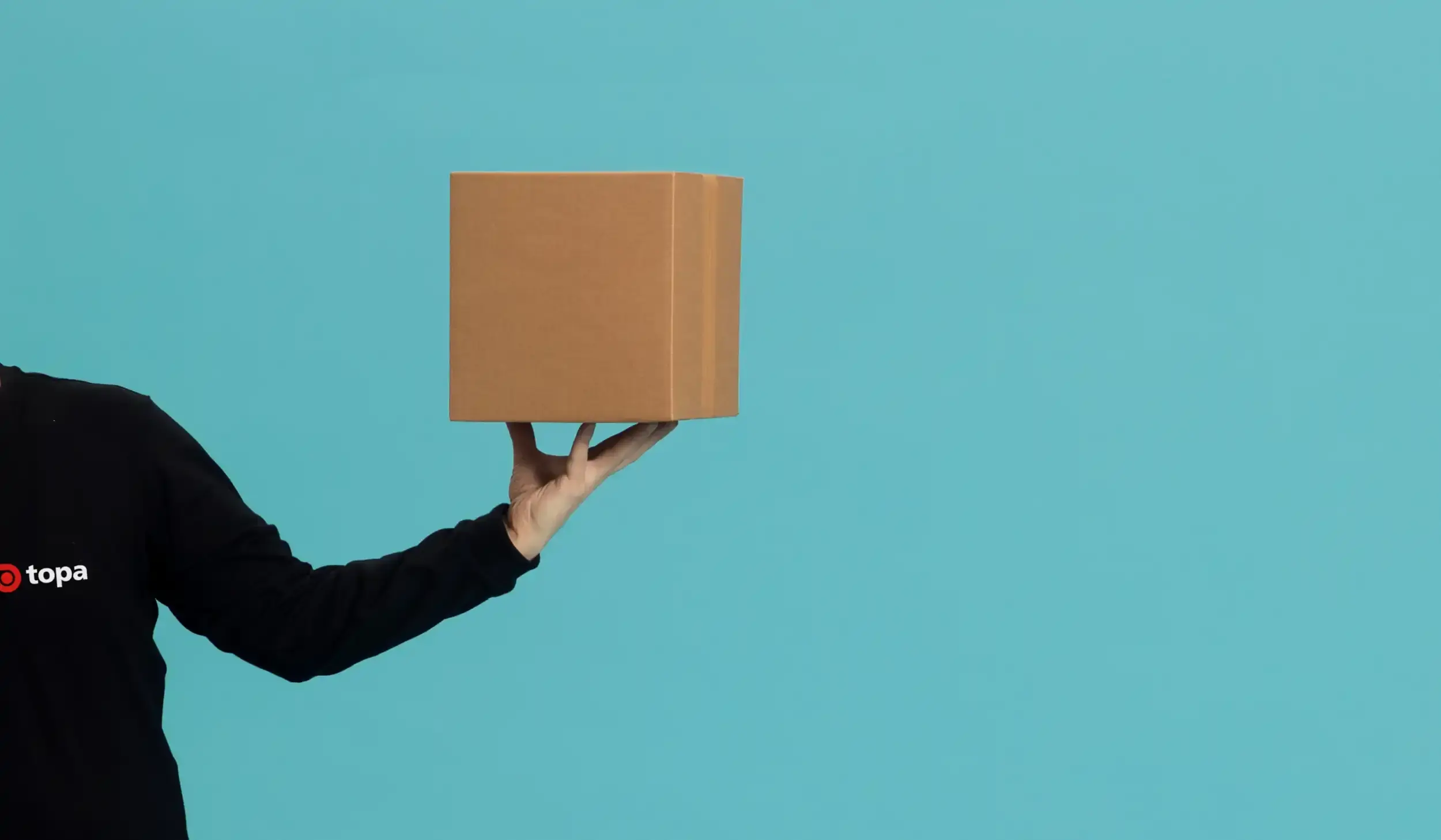Less material: less volume, more impact
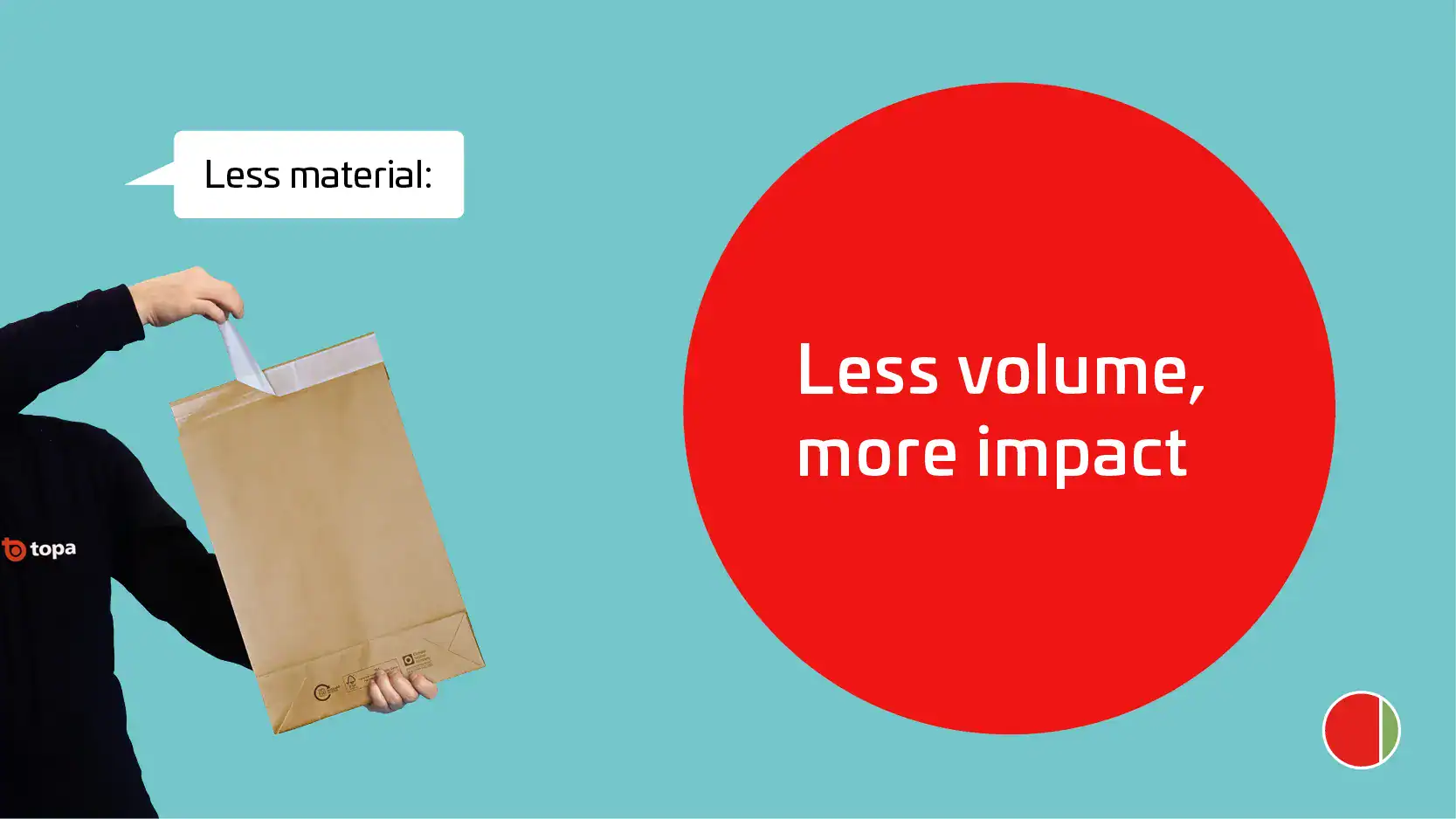
Using too much packaging material is not only a waste of raw materials, it also leads to higher costs and puts unnecessary pressure on your logistics processes. More cardboard, more void fill and larger boxes often result in more storage space required, higher transport costs and more waste. That’s why, at Topa, we always look at whether it can be done with less.
‘Less material’ is one of the seven focus areas through which we structurally reduce the Total Cost of Packaging (TCP). By making packaging more compact and efficient, you save on costs and reduce the environmental burden.
Where does the excess come from?
Excessive material use can be found in several areas of the packaging process. Think of boxes that are too large for their contents, resulting in unnecessary air being shipped. Or too much void fill to compensate for that. Packaging is also often made unnecessarily strong or complex, even when the product doesn’t require it.
Another common example is the use of packaging that isn’t properly tailored to a diverse product range. This often leads to standard boxes that almost always need adapting, resulting in additional materials being used. By critically assessing the size of the product and the packaging you currently use, the configuration of the void fill and the role it needs to play, you can quickly identify and reduce unnecessary usage.

How to reduce material usage
We begin with an analysis of your current packaging process. Where is more material being used structurally than needed, and why? Which packaging could be made more compact and efficient, or where could materials be used differently?
In many cases, we can immediately help with a solution from our existing range. Topa offers a broad selection of standard packaging that focuses on efficient use of materials and space. Think of boxes with optimal dimensions, clever folding designs, or packaging that suits multiple product formats or allows for variable heights.
If a standard solution doesn’t meet the need, we will design a bespoke packaging solution together. A custom-made box better fits the size and weight of your product, allowing you to use less material and pack more efficiently. This also helps prevent unnecessary void filling and wasted space during storage and transport. In some cases, void fill may no longer be required at all.
Opportunities inside the box
Sometimes, the savings are not on the outside of the packaging, but rather inside. By choosing the right void-fill system, and applying it correctly, you can significantly cut down on material usage. Think of paper or air cushion systems that deliver exactly the right amount of fill, tailored to the product.
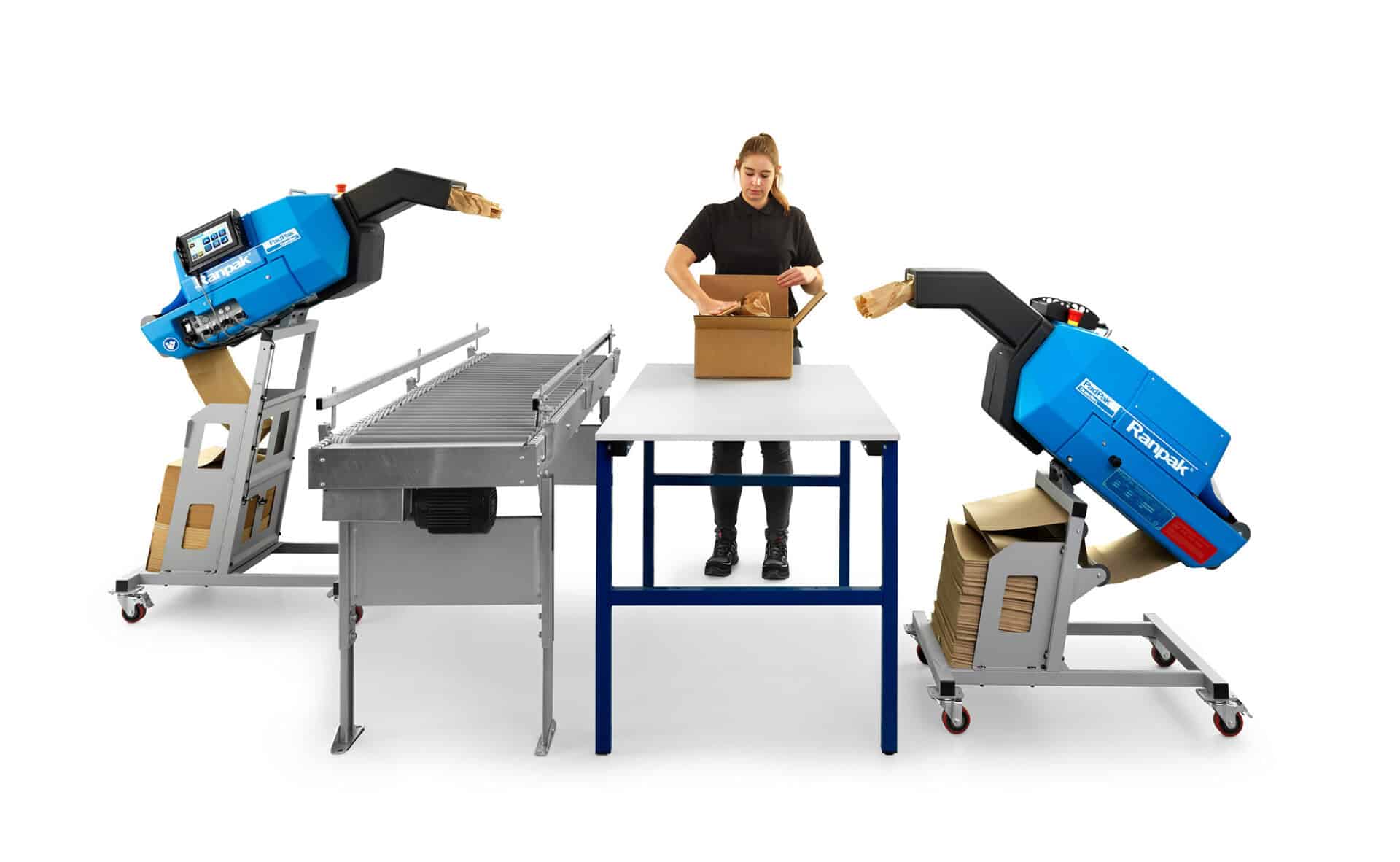
These systems are available in various standard versions, but we also offer bespoke solutions, with optional custom branding. They can be easily integrated into your workflow, either at the packing table or along the packing line. This allows you to combine material savings with a smooth and efficient packing process.
Our packaging specialists actively support this process. They will visit you to demonstrate how to optimise the system, from machine settings to paper usage.
In practice: 20% less cardboard at Supervers
For Supervers, a supplier of fresh meals, we analysed how their packaging process could be made smarter. The existing packaging used more cardboard than necessary and contained a relatively large amount of empty space, which led to extra void fill and inefficient transport.
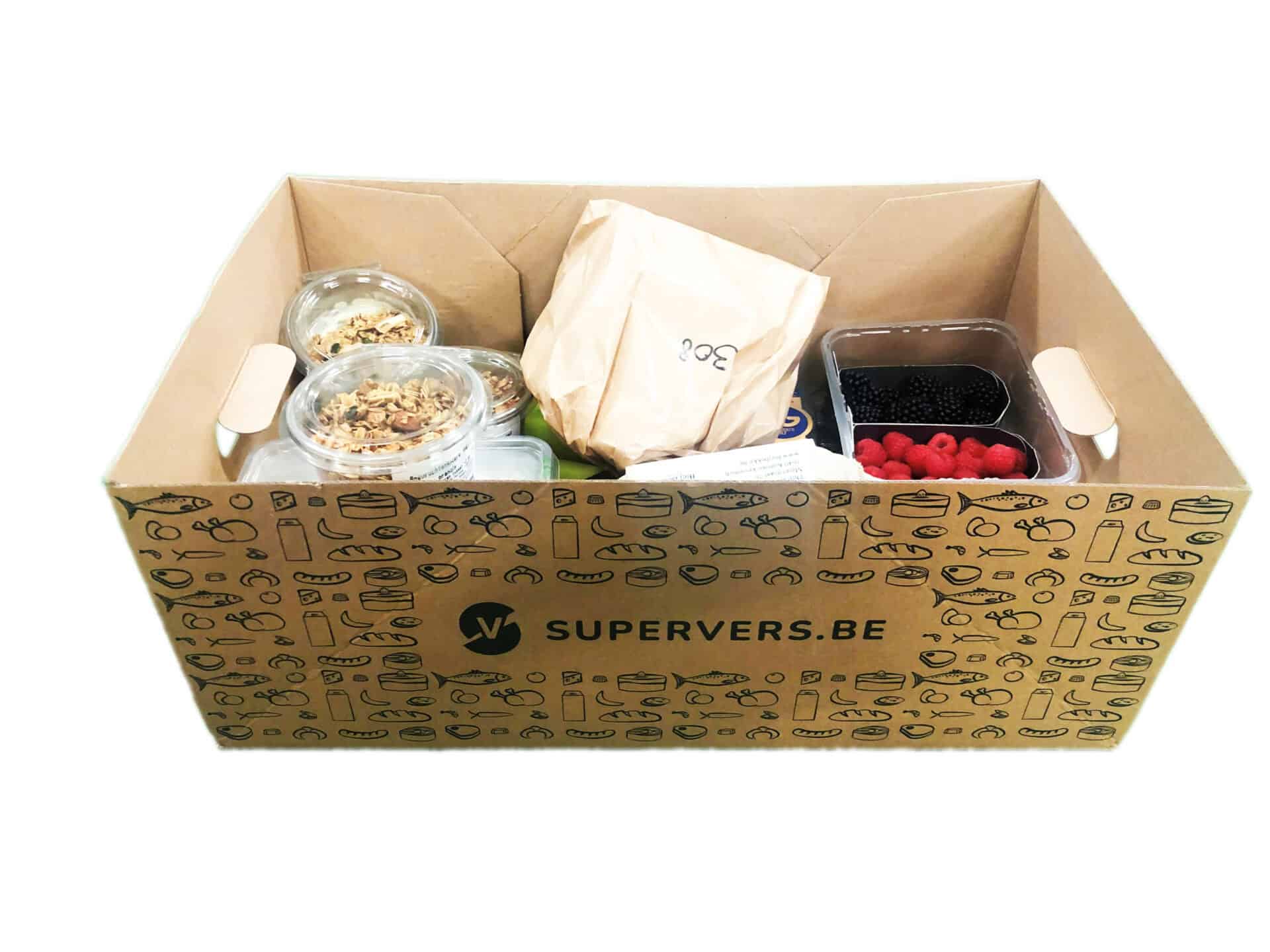
We replaced this with a more compact box design that better matched the dimensions of the meal trays. By reducing the volume and minimising void fill, cardboard usage was reduced by 20%. This led not only to lower material usage, but also to a reduced transport volume, faster processing at the packing table, and savings in storage space. A relatively simple adjustment with noticeable impact on multiple fronts.
Read the customer case of Supervers.
Curious whether your products can be packed with less? We’d be happy to think along with you. Because less material doesn’t mean less protection, it means less wasted space and lower costs. Feel free to get in touch with us via +31 252 245 200 or info@topa.nl.
